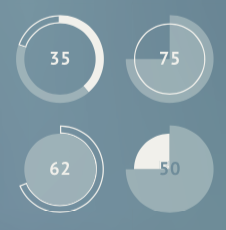11.21.2025
Sausage casings bulletin, November 21, 2025

...

For the week, palm oil futures lost about 1 1/2 percent (November contract -33 ringgit) but managed to settle above the critical psychological level of 2,200 ringgit. Technically-driven buying at the 200-day moving average helped support gains, but selling at the 20-day moving average limited the advance on Friday.
Vegetable oil futures were lower on the Dalian exchange with palm oil futures down a little more than 1/2 percent (January contract -26 yuan per tonne) and soybean oil futures off a little more than one percent (January contract -72 yuan per tonne). The weakness in soybean futures on the Dalian exchange contributed to the decline in soybean oil futures, which fell below the 6,100-yuan level but held the psychologically important 6,000-yuan level. Selling at the lower end of the recent range pressured palm oil prices, but technically-driven buying at the lower Bollinger band helped limit the decline. For the week, soybean oil futures lost a little more than 1/4 percent (January contract -20 yuan), and palm oil futures fell a little more than 1/2 percent (January contract -32 yuan).
Larger-than-expected quarterly stocks data from Statistics Canada triggered selling in canola futures, which drove most contracts about 1/2 percent lower (November contract -C$2.50 per tonne) on Friday. The decline left the most-actively traded November contract below the lower end of the recent trading range, but not below the low set at C$440 on August 1. If futures continue to move lower and break below C$440 the next level of support would be C$430, which is the April 29 low in the nearby continuous chart. However, if prices continue below that level there is little support until the September 2014 low set around C$400. For the week, canola futures fell almost 1 1/4 percent (November contract -C$5.20).
Rapeseed futures were unchanged or marginally lower (November contract -€0.50 per tonne) on light profit-taking following the recent life-of-contract high. Selling at the upper Bollinger band contributed to the weakness, but prices remain firmly in a steady uptrend. For the week, rapeseed futures gained a little more than 1/4 percent (November contract +€1.25).
Soybean futures lost less than 1/2 percent (November contract – 3 3/4 cents per bushel) on Friday. For the week, soybean futures fell a little more than 1 1/4 percent (November contract -11 1/4 cents). Generally supportive weather conditions for crop development and technically-driven selling at the 10-day moving average weighed on values. The decline left the most-actively traded November contract at the lowest level since August 23. Weak export demand out of Brazil has pressured prices on the Brazilian Mercantile and Futures Exchange, which has also contributed to the bearish tone in U.S. futures over the last two weeks. Soybean futures on the Dalian exchange also fell sharply for the second consecutive day with prices down two percent. The reversal in soybean futures combined with the recent attaché report may indicate that soybean demand in China will be weaker than expected, which may have contributed to the selling in the U.S. market. Funds were reported sellers of 5,000 soybean contracts, 3,500 soybean meal contracts, and 1,000 soybean oil contracts.
Light fund spreading helped soybean oil futures post marginal gains on Friday with most contracts gaining less than 0.1 percent (December contract +1 basis point per pound). For the week soybean oil futures lost a little more than 1/2 percent (December contract -16 basis points) to erase the small gain posted last week. It was the second week that soybean oil futures traded in a fairly wide range and settled near the middle of the distance between the high and the low. Optimism about the potential for a boost in demand from the biofuel industry helped support prices, as did buying above the psychologically important 28.5-cent level. However, the weakness in soybean futures and weakness in near-term demand from the biofuel industry weighed on values. In the short term, soybean oil futures may continue to trade in a range between 28.5 cents and 29.5 cents, but prices could move significantly higher if there are actions taken to restore the demand from the biofuel industry.